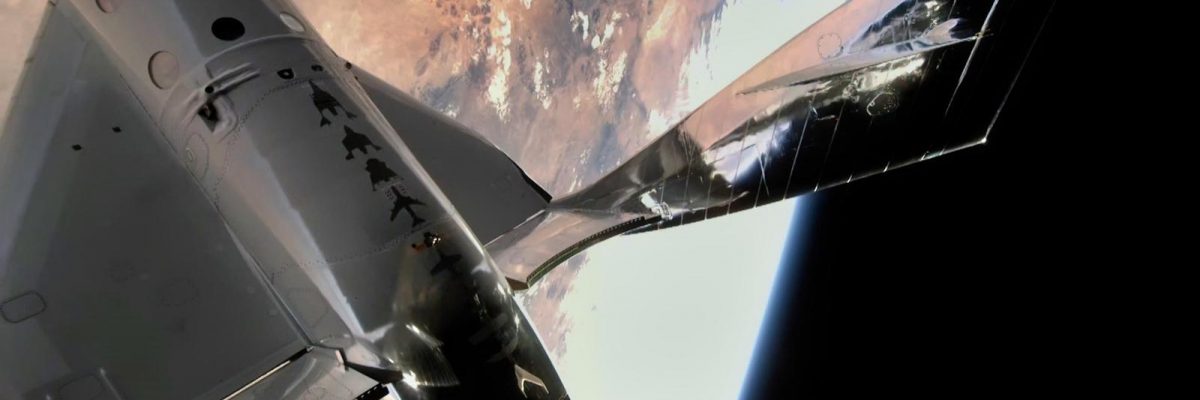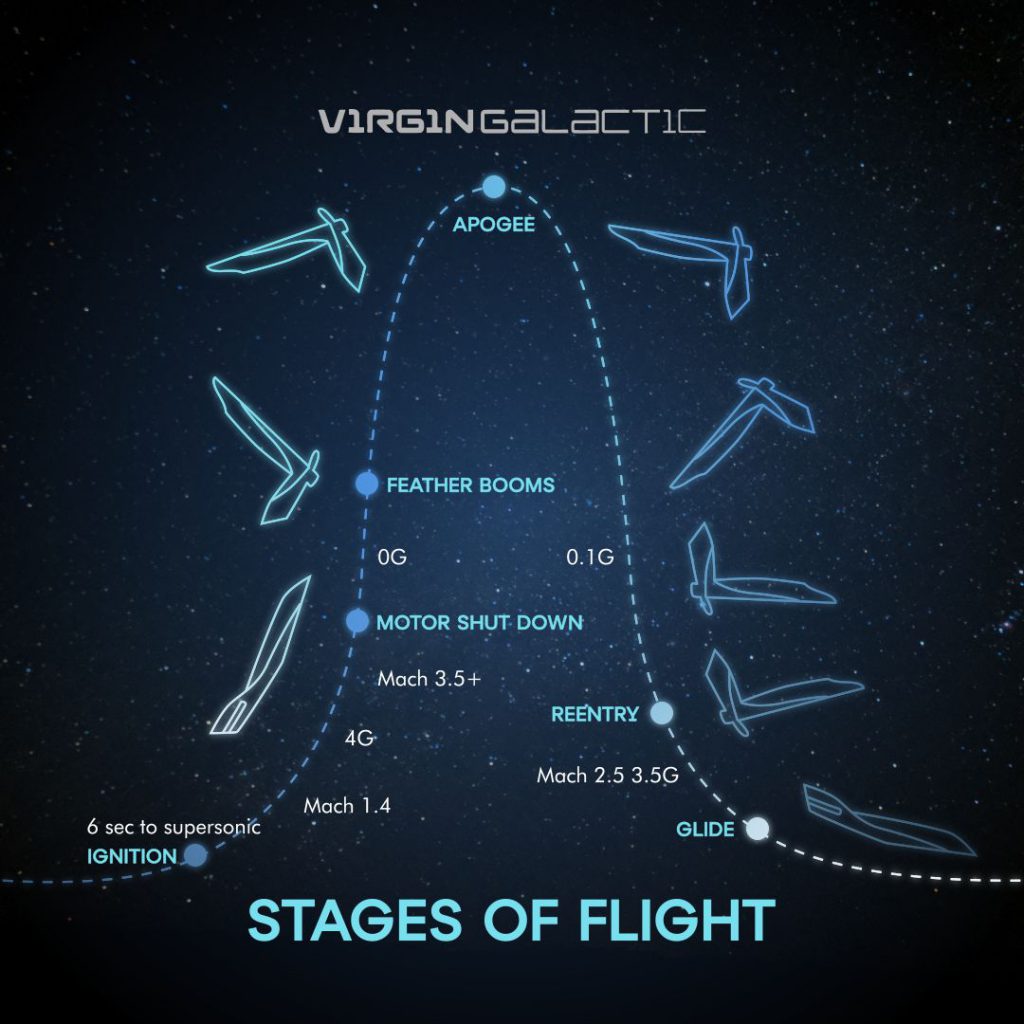On Sunday, July 11, 2021, the billionaire owner of the Virgin Galactic Company, Richard Branson, made the first tourist spaceflight in history. Branson, with five other friends, reached a height of 88 kilometers, the upper extent of the atmosphere, and stayed there for four minutes. The spaceship was lifted to a height of 50,000 feet by a plane and released to the atmosphere, then it activated rocket motors which brought it to the top of the atmosphere. During this time the passengers were weightless, then they began the return to Earth until they landed. But this spaceship was very different from the previous space shuttles which flew into space and went into a circular path around the Earth. It wasn’t attached to a rocket and it wasn’t equipped with ceramic shields to protect it from the enormous friction created during reentry into the Earth’s atmosphere, and it’s total weight was significantly less than the weight of the usual space shuttles. It was equipped with seventeen windows and had the standard aerodynamic shape of an airplane. It was lifted on the back of an airplane which took off in the usual manner from an airport and not from a launch pad, while its total cost was incomperably less than that of the usual spaceship. So how can it be that this spaceship made its way into space so easily and didn’t burn up when it re-entered the atmosphere? In order to understand what happened during the flight we need to look at several aspects:
- The spaceship didn’t really enter outer space and leave Earth’s gravity. In order to enter outer space and not “fall” back into Earth’s gravity, or in other words, to become free of Earth’s gravitational pull, two things have to happen. First you need to reach a much higher altitude that that which the Virgin spaceship reached. Satellites, for example, circle our planet at between 150 to 2000 kilometers. Secondly, a body that needs to stay in space at a given distance without falling back to Earth needs to go into Earth orbit at a very high speed, nearly eight kilometers per second (28,000 kilometers per hour). This is such a high speed, that it produces a centrifugal force, which opposes the centripetal force of the Earth’s spin and gravity, and creates a balance which keeps the spaceship in its orbit at a given height. If it slows down, the centripetal force will become stronger and the spaceship will continue Earthward until it crashes or burns up. Branson’s spaceship was “shot” up at a speed of Mach 3, about 3670 kilometers per hour. It flew straight up until its speed was adjusted and it dropped back to Earth.
- When a spaceship circling the Earth at high speed enters the upper atmosphere at 100 kilometers, friction with the air greatly raises the temperature of its structure, occasionally as high as 3000 degrees Celsius. That high a temperature can cause the spaceship to break apart and burn up before it reaches the ground. In order to re-enter the atmosphere without causing damage to the spaceship or its passengers, several conditions have to be met. Initially it has to enter the atmosphere at an angle of 45 degrees. If the angle is smaller, the spaceship can be thrown back into outer space. If the angle is greater than 45 degrees, the spaceship will heat up too much and break up like an asteroid. In order to somehow manage with these high temperatures, ceramic tiles resistant to high temperature need to be attached to the spaceship, but their weight is impossibly huge. Therefore a great deal of energy would be needed to lift the spaceship above the atmosphere. Because the Virgin spaceship only reached a speed of Mach 3, its return to Earth didn’t produce the excessively high friction which produces the extreme temperatures capable of endangering the ship.
- Why is it impossible to brake the speed of the spaceship in outer space before it enters the Earth’s atmosphere? That’s because it involves using very powerful additional rocket motors which need a great deal of fuel that also needs to be lifted above the atmosphere. This creates a situation where the spaceship would be too heavy to break free from the pull of gravity. Therefore, in order to reduce the speed of the spaceship, friction itself is used to slow the vehicle. Friction with the atmosphere slows the spaceship, a phenomenon known as “atmospheric brakes”. Its a case of finding a balance between friction and heat on one side and speed on the other, until the vehicle lands, at least at not more than the speed of a landing aircraft. Because Branson’s spaceship didn’t actually leave the Earth’s control, all that procedure became redundant and it simply flew back to Earth like a jet fighter, until it reached the right airport.
For us to fly in a spaceship, to break free of the pull of Earth’s gravity, and to reach other stars, we’ll have to create a new means of flying not based on the conventional fuels on our planet, but a new powerful energy source, very light and inexhaustible, which will allow reaching a great height and slowly cruising, as well as rapid frictionless flight in outer space. Such a source of energy is as yet unknown to man.





